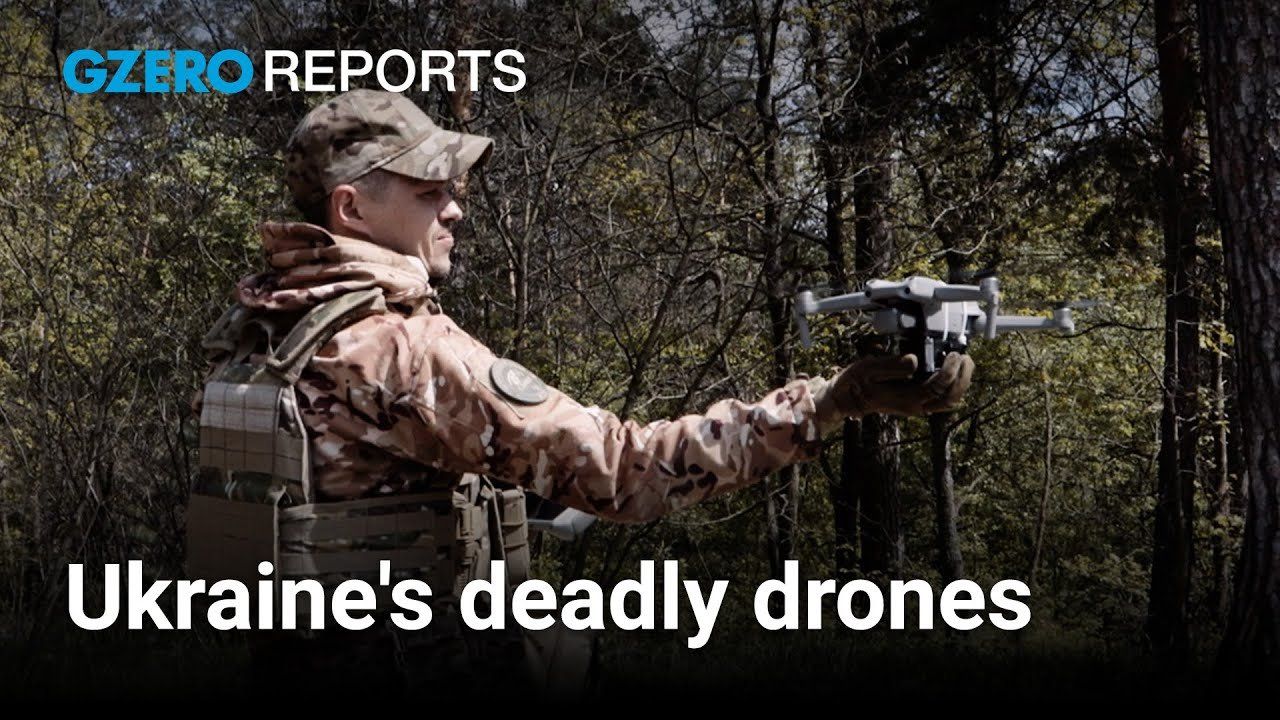
First-person view (FPV) drones are cheap and effective on the battlefield in Ukraine, but the army urgently needs to train pilots how to fly them.
Over two years into Russia’s invasion of Ukraine, with ammo running low and ongoing military aid from the West at risk of drying up completely, the Ukrainian army is turning to a small piece of technology that’s having a surprisingly big impact on the battlefield: first person view (FPV drones), Alex Kliment reports for GZERO World with Ian Bremmer.
Originally invented for drone racing, FPVs have cameras that transmit what they “see” in real time to a pilot wearing goggles on the ground. FPVs are fast, hard to track and target, fit into spaces traditional artillery can’t, and can be fitted with explosives to use in kamaze-style attacks. Most importantly, they only cost around $500.
The biggest hurdle to scaling up Ukraine’s use of FPV drones is that they’re really hard to fly. So schools are opening nationwide to teach soldiers how to fly and incorporate them into battlefield tactics. Last fall, Adnan “Audi” Rana, a former marine who runs a non-profit called Aerial Relief Group, visited a drone school on the outskirts of Kyiv to check out the training program and see first-hand how well Ukraine’s efforts to incorporate the technology into its military is going. He found a DIY, ad-hoc effort run entirely by volunteers representing Ukraine’s best chance of holding back Russian troops until fresh military aid arrives from the West.
Watch full episode: Solving Europe's energy crisis with Norway's power
Catch GZERO World with Ian Bremmer every week online and on US public television. Check local listings.
- Ukraine drone attacks on Moscow imply they don't fear Russian response ›
- Israel, Iran, and the metastasizing war in Ukraine ›
- More drone strikes on Moscow ›
- Ukraine shows success with long-range drone attacks against Russia ›
- Tiny drones in Ukraine are destroying tanks ›
- The future of war: James Stavridis on China, Russia, and the biggest security threats to the US - GZERO Media ›
- The future of modern warfare - GZERO Media ›
- Ukraine's tech use against Russia is revolutionizing warfare - GZERO Media ›